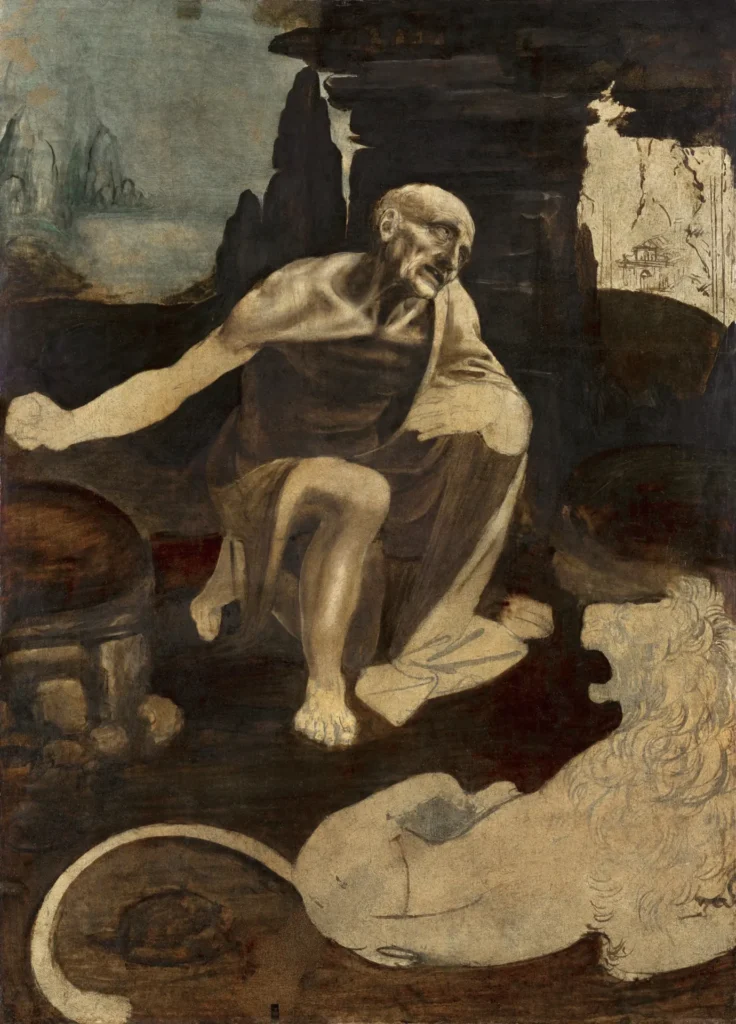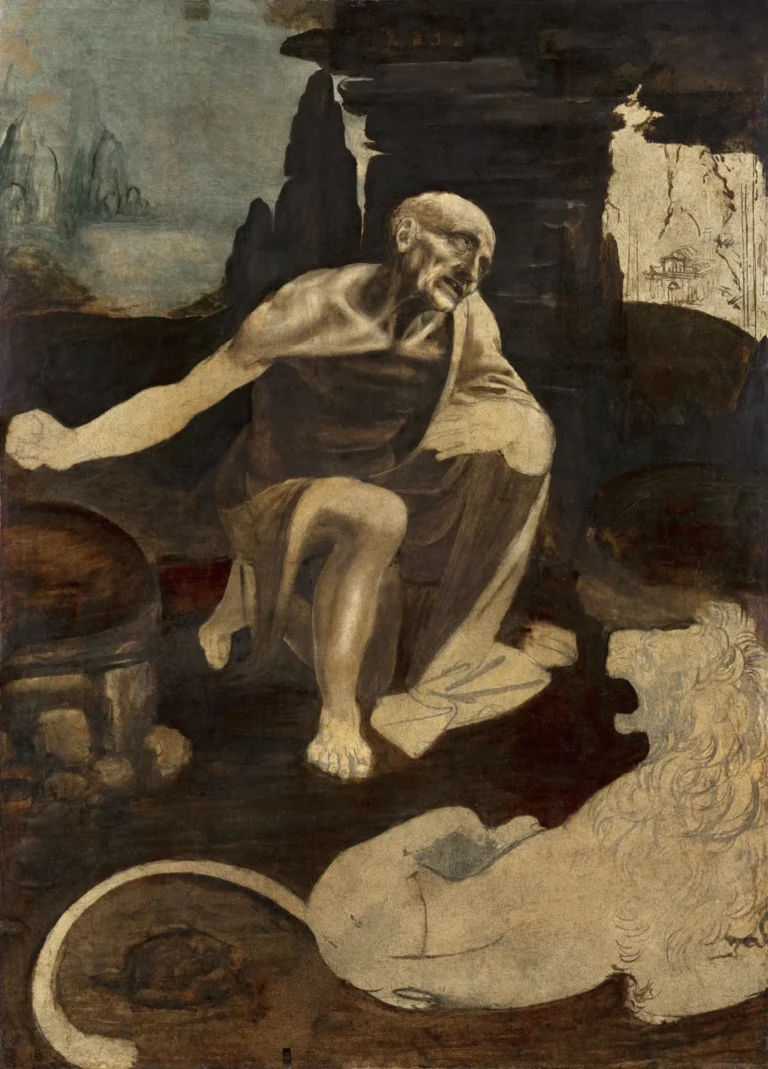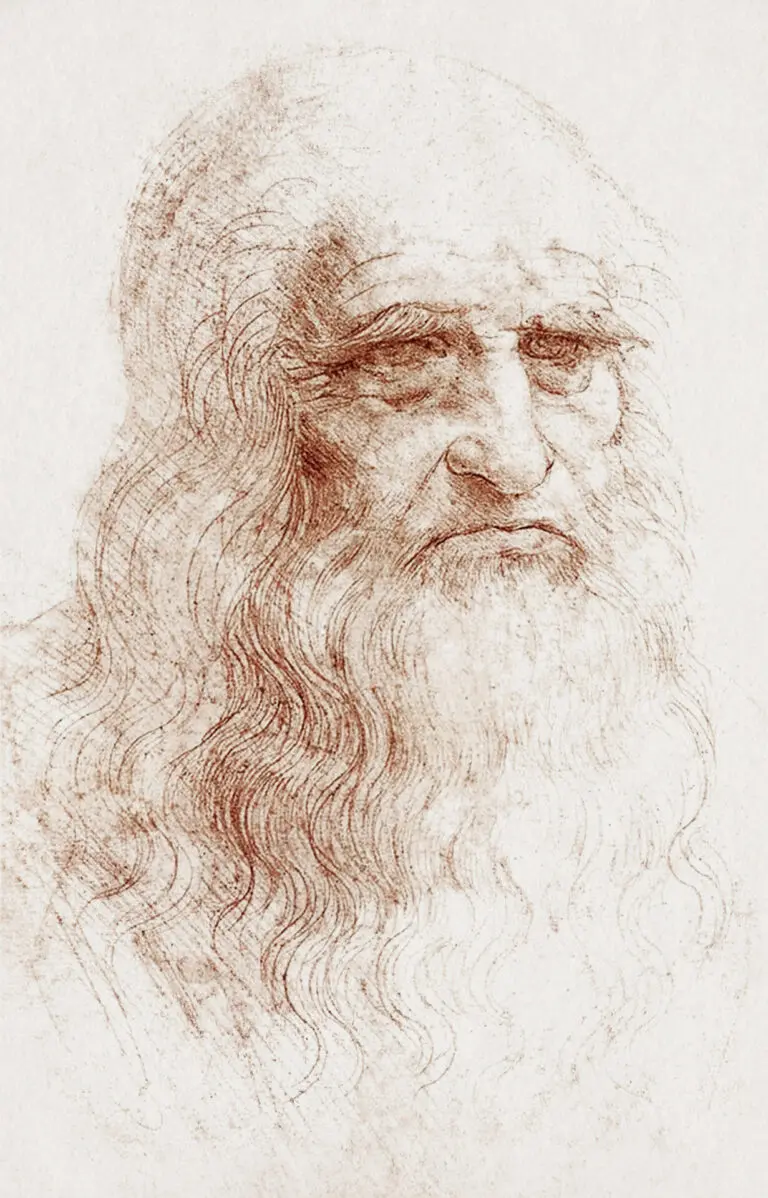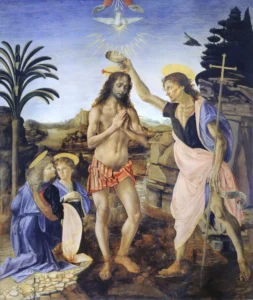Saint Jerome in the Wilderness (1480)
Created between 1480 and 1490, Saint Jerome in the Wilderness is one of Leonardo da Vinci's few surviving paintings, capturing the figure of Saint Jerome amidst a barren landscape, symbolizing his hermitage. The painting is remarkable for its detailed anatomy, innovative layout, and the emotional depth it conveys about Da Vinci's own spiritual struggles. Despite its unfinished status, it remains a pivotal work in understanding Renaissance art.
Approximate Years 1480 - 1490
About the Artwork
Initially painted in Florence and possibly worked on in Milan, this piece remains infamous due to Leonardo da Vinci's tendency to leave works incomplete—reflective of his perfectionism. The depiction of Saint Jerome kneeling in a rocky wilderness, deep in contemplation, illustrates his spiritual journey as a hermit. A lion symbolizes both companionship and Jerome's legendary act of mercy. After Da Vinci's death, the painting was cut into fragments and repurposed, marking a turbulent history until its eventual restoration and return to public view in the Vatican Museums.
Did You Know
Saint Jerome is often depicted with a lion in artistic representations, symbolizing his legendary act of removing a thorn from the lion’s paw. This act of kindness led the lion to become his devoted companion, a motif that emphasizes themes of compassion and redemption.
Leonardo da Vinci was notorious for leaving many of his works unfinished due to his relentless quest for perfection. Saint Jerome in the Wilderness is one of the prime examples of this trait, showcasing the tension between his brilliant vision and the practical challenges of art-making.
Saint Jerome in the Wilderness faced a tumultuous history post-Da Vinci’s death. After being cut into fragments and repurposed, it wasn’t until the 19th century that it was rediscovered, followed by a lengthy restoration process that replanted it firmly in the annals of art history.










